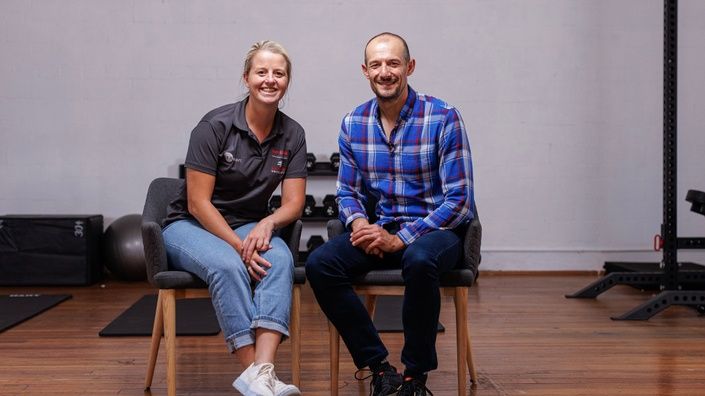Introduction
The Running Injuries: The Foot Masterclass, taught by Dr Brooke Patterson and Dr Daniel Bonanno, delves into the assessment, diagnosis, and treatment of bone stress injuries (BSI) in runners, exploring intricate topics such as imaging, the role of biomechanics and much more. This position statement provides clinically relevant, actionable information that may be useful to health professionals.
Part 1: Anatomy and Pathophysiology
BSI is an umbrella term encompassing a history of repetitive loading leading to the accumulation of bone damage. Most BSI occur to the metatarsals, however, fractures of the navicular and proximal diaphysis of the fifth metatarsal should be treated with particular care as these two sites are most at risk.
- Bones deform in response to loading and depends on a) the location of force applied, b) magnitude of force (influenced by factors including body weight, speed, and how they run), and c) the ability of bone to resist load (influenced by factors such as nutrition and sleep).
- When we run, normal bone microdamage occurs. If bone damage and formation are balanced, then the bone will adapt to the changing demands. If the bone is not given sufficient time to heal and equilibrium is not achieved, then a BSI is likely to occur.
- The type of running pattern affects the likelihood of stress fractures in certain locations; a heel strike pattern places the whole foot under duress with greater force going through the heel, knee, and hip, whilst a forefoot pattern is unlikely to lead to a calcaneal BSI but places more load through the midfoot, achilles and calf.
- High risk stress fracture sites are sesamoids, lateral process of the talus, navicular, proximal diaphysis of the fifth metatarsal and the base of the second metatarsal.
- Low risk stress fracture sites are the cuneiforms, cuboid, calcaneus, and the distal diaphysis of the second to the fifth metatarsal.
Part 2: Diagnosis and Imaging of Bone Stress Injury
Examination of BSI will differ depending on the fracture site, with thorough palpation skills needed to correctly identify each individual structure. Imaging can be a useful adjunct, including when trying to differentiate between stress reactions and fractures; however, it should be justified by asking yourself if it will change your management of the injury.
- Typical subjective information will include a) activity-related mild diffuse pain or localised pain, b) resting and night pain which does not warm up (although, stress reactions may warm up), c) no pain with muscle testing or joint motion, d) history of a recent change in activity or loading such as footwear in the 4-6 weeks prior to the injury, e) insidious injury onset, and f) pain with running, hopping, and walking.
- Objective assessment should encompass observation and palpation, observing foot posture and gait, range of motion assessment of the ankle, big toe, and base of metatarsals, resisted movements relevant to that region/ injury, special tests and a functional assessment when relevant to analyse movements such as hopping.
- In most instances, signs of a stress reaction include pain with running, no pain at rest, pain with palpation (but not always), pain may be localised, no pain with daily activity, it may be warm to touch and may be swollen.
- In most instances, signs of a stress fracture include pain when running, pain at rest (sometimes), pain with palpation, localised pain, pain with daily activity, warm to touch and presence of swelling.
- MRI is the gold standard for imaging bone stress injuries, as it will identify stress reactions, stress fractures and oedema. X-ray can be a useful first-line investigation to identify chronic stress reactions or stress fractures. CT scans should be used for secondary imaging only given the high exposure to radiation.
Masterclass Preview
Press the PLAY button to watch our FREE PREVIEW of Daniel and Brooke discussing the diagnosis of of a navicular BSI
Part 3: Management and Rehabilitation of Bone Stress Injuries
Managing BSI can be difficult, but should begin with understanding the severity and type of BSI, as high risk fractures will be managed differently to their low risk counterparts. Understanding why the injury occurred to the particular bone is important to try and prevent injury recurrence; analysing the ROM of distal and proximal joints to the fracture site, foot posture and alignment, and running technique can help answer this question.
- High risk fractures should be immediately immobilised, ordered to be non-weight bearing in a CAM boot +/- crutches, and should consider early surgical opinion.
- Low risk fractures should be optimally loaded and guided by pain; if the individual can weight bear pain free then do so, whilst running and aggravating activities should be initially avoided and gradually built up.
- Return to running criteria following BSI should encompass a) no pain with hopping, jumping, running, b) radiological healing (for high risk fractures), c) completion of graduated return to running and should d) avoid spikes in training load.
- Bones become ‘bored’ very quickly if the load is repetitive and similar, e.g., when long distance running. To stimulate bone production, consider adding a variety of loading patterns such as plyometrics, varying footwear or training surfaces.
- There is no single best shoe to reduce injury risk, and athletes should focus on wearing a shoe that is comfortable. A more effective way to reduce load in the foot is to increase running cadence, i.e., utilising shorter, faster steps.


